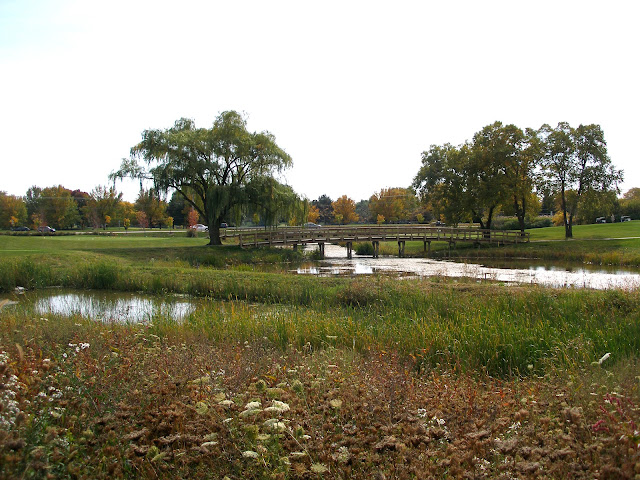Another golf course serving the greater good
Stormwater and water-quality issues far larger than any golf
course issue have again enabled a course renovation project, driving home yet
again golf’s communitarian benefits to the public at large. Bob Lohmann
recently wrote about this dynamic
for Golf Course Industry magazine, in
reference to our work at The Bridges at Poplar Creek, in Hoffman Estates,
Illinois.
Several hundred miles north, in Appleton, Wisconsin, we see
the same formula at play: New state mandates have obliged cities and towns to
meet certain water quality standards in lakes and streams. The Wisconsin River
runs through Appleton, and the city sought a place to find water, store it,
clean it up and release it to the river.
Hello, Reid
Golf Course, a municipal facility that proved to be a logical
location for this water-quality and stormwater-management effort. The project
has been green-lit, bid documents are out and it looks as though construction could
begin as soon as November 2012.
Lohmann Golf Designs has been a design consultant on this
project for several years now, not just because we have executed so many
similar golf course-enabled, stormwater-management projects elsewhere, but
because there really are huge golf-related repercussions to reckon. Obviously, better storage and treatment of water involves
the creation or major expansion of on-course ponds. This is sure to affect the
routing of existing holes — but it also results in thousands and thousands of
cubic yards of fill, coming from these big, new holes in the ground.
Again, it’s only logical to use that soil, on site, to
improve the golf course where possible, in terms of design, agronomy and
safety. In Appleton, LGD has come up with yet another inventive and practical
plan, if we do say so ourselves. Several rerouted holes at Reid will have to carry or skirt
these new bodies of water. Our design plans achieve those changes without
making this municipal track too difficult — forced carries can be heroic and
strategic, but they’re not for everyone. For example, we’ve moved the forward
tees on the short par-3 11th up and around a new pond perimeter to
preserve an alley of fairway.
We’re also using this abundance of new fill (estimated to be approximately 100,000 cubic yards) to rebuild three greens impacted by pond creation. And this is where it gets pretty neat: We will deploy an “alternative green construction method” using native topsoil, a 6-3-1 mix of sand, peat and soil in the root-zone. Yes, this isn’t a USGA-specified approach but our mix will most closely mimic the root-zone on the remaining 15 greens. When we’re done, maintenance of all 18 greens will be more or less identical.
Further, we’re using a bentgrass variety that is not one of
the elite, new varieties because we want the new greens to match the old ones
in color and performance, as well.
One more thing about the Reid project: Inevitably, there has
been some minor opposition to the proposed changes on the golf course. There is always a
population of golfers, at a private club or a muni, who liked the course just
the way it was. It has taken some serious outreach from the city and LGD to
make plain the state mandates, the resulting changes, and why all this must
happen. See here the webpage
Appleton has created to serve as a clearinghouse of information re. the
project. It’s well done, and while some people will never be won over, this is
a good model of what other course operators might consider when undertaking any
major renovation project.
 |
This wetland at Deerpath Golf Course in Lake Forest, IL gathers water entering the site from a nearby hospital campus and cleans it before depositing it back into the Skokie River.
|


.JPG)
.JPG)
.JPG)









